Of Old Radios And Related Items--Published Monthly
Collecting MP3 Portables -- Part 2
By Richard Menta
WEB EDITION
This is the second of Richard Menta's articles on MP3 portables as future collectibles. The first article appeared in the December 2004 issue. As editor of MP3 Newswire, Richard has reviewed these sets online and now shares his findings with us. He reminds us again that "all new technology will eventually become old." (Editor)
Connected to my 1940 RCA K60 console through the RCA jack and hidden in back is an MP3 player containing hundreds of old radio shows. I find this to be a most remarkable way to listen to the old shows -- through a vintage mono speaker. Many of these shows I purchased on eBay, with roughly 100 half-hour episodes burned to each CD. This ability of MP3 to compress so much content in such a small space gave new life to an entertainment that was displaced decades ago when television came to the forefront.
Digital technology is as much a tool to preserve and distribute what is old than to replace it. I was born long after these programs last aired. Had it not been for MP3 (and the many collectors who spent hours converting old records and tape to digital), I would never have had the opportunity to appreciate these shows as I do today.
With that in mind, and the knowledge that all new technology will eventually become old, here is part two of my list of collectible MP3 portable players. The list reflects the pre-Apple iPod era, where players struggled with how to supply reasonable capacity in the face of high memory prices. Today, most of these older players can be acquired for under $20, many in the original boxes.
MP3 sets with Collecting Promise
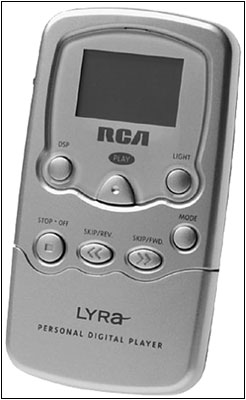
Figure 1. RCA's first MP3 portable, the Lyra, ca. 1999.RCA Lyra (1999). A straight-ahead player with few frills, the RCA Lyra, shown in Figure 1, was RCA's first MP3 portable. It is also notable as one of the few players to support Real Network's G2 format, an MP3 competitor that failed.
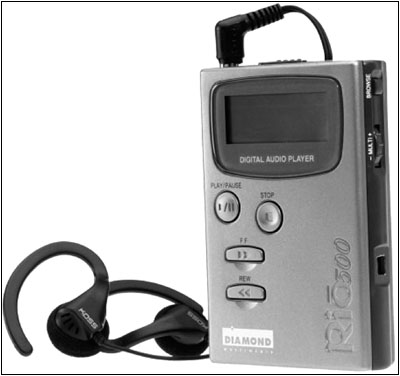
Figure 2. The Diamond Rio PMP500 from 1999 has a capacity of 64MB.Diamond Rio PMP500 (1999). Upped to 64MB of built-in memory, this Rio portable, shown in Figure 2, came in three colors: gray, purple and teal. It quickly became the top selling portable of its day. Diamond was acquired just before the Rio 500's release by a company called S3 that then changed its name to SonicBlue.
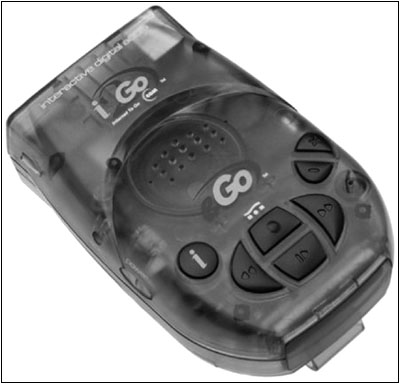
Figure 3. The eGo model from I2Go has a 500-song capacity. It sold for over $2,000 in 2000.I2Go eGo (2000). I called the eGo the Cadillac of MP3 portables in my original review in MP3 Newswire. It was the first player to tackle the size-to-capacity problem of existing portables and succeed. At that time, all players but one, the Remote Solutions PJB-100, could hold only about a dozen songs. The PJB-100 could hold 1,200 songs, but it was the size and weight of a small brick. The eGo is shown in Figure 3.
About the size of an average player, the eGo utilized IBM's tiny Microdrive technology (the same drive now found in the popular iPod Mini), which hit the 1GB capacity mark during my Newswire review. What made the eGo special was that it could run two Microdrives simultaneously, giving it an extraordinary 2GB top end and allowing it to hold over 500 songs. This capability hit you in the pocketbook though. Since each 1GB Microdrive alone retailed for $1,000 a 2GB eGo cost well over two grand.
This player had many unique features including a built-in speaker and text-to-speech capabilities designed specifically to translate your morning e-mail into MP3 files to play during the morning commute. If the Rio line of players is to RCA what the Creative Labs line is to Zenith, then the eGo aspired to be the MP3 equivalent of E.H. Scott. During the 2000 Academy Awards, an eGo was given to all the nominees as part of their ceremonial goody bag. The promotion didn't help the company. It folded in 2002 after only making this one model.
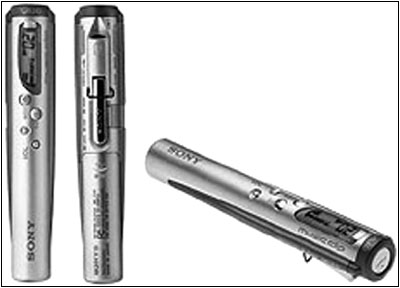
Figure 4. The Sony MC-P10 Music Clip sold for $300 and was a commercial failure.Sony Vaio MC-P10 Music Clip (2000). The music clip, shown in Figure 4, looked like a Parker fountain pen on steroids. Selling for $300, this unique 64MB player became one of Sony's great failures. Why did the music clip fail? Mostly because Sony players did not play MP3 files at all, but files formatted in Sony's competing ATRAC3 format.
This player did come with a software converter so users could laboriously transcode each of their MP3 files into ATRAC3. This did not appeal to many buyers who thought they were purchasing an MP3 player, a notion facilitated by Sony marketing who used the transcode feature as an excuse to put a big MP3 logo on the box.
The ploy backfired badly and angry Sony fans returned these players in droves. Other negatives, including a frustrating PC-to-player file transfer program, exacerbated the problem. Sony tried to recover with two other digital music players, also ATRAC3 only, but bad word of mouth continued, and they stopped making these players altogether.
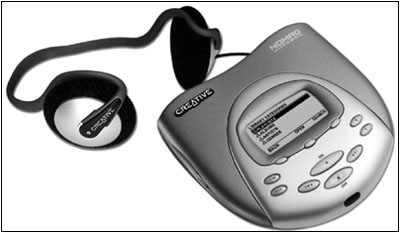
Figure 5. The Nomad Jukebox from Creative Labs sold initially for $500 and had a 6GB capacity.Creative Labs Nomad Jukebox (2000). The second jukebox portable to hit the market, the Nomad, shown in Figure 5, was a big success for Creative. Initially listing for $500, it possessed 6GB of capacity and a robust equalizer system that made it the best sounding player available. Like the Remote Solutions PJB-100, it was big and heavy, weighing in at nearly a full pound.
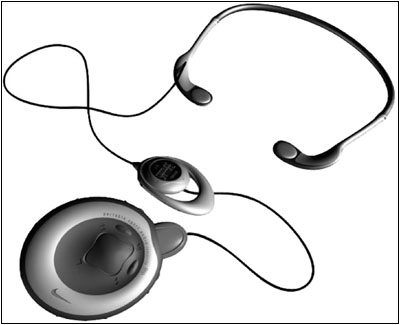
Figure 6. This Nike PSA Play 120 was designed for use during physical exercise. It featured an armband strap, and the player was coated with a protective layer of neoprene.Nike PSA Play 120 (2001). The first MP3 player designed for the gym set, Nike's introductory player was specifically for use during exercise. Designed by the people at Rio, the PSA Play 120, shown in Figure 6, was wrapped in a neoprene coating to keep sweat out of the workings. The unit attached to the body via a convenient armband that kept the unit away from rotating body parts.
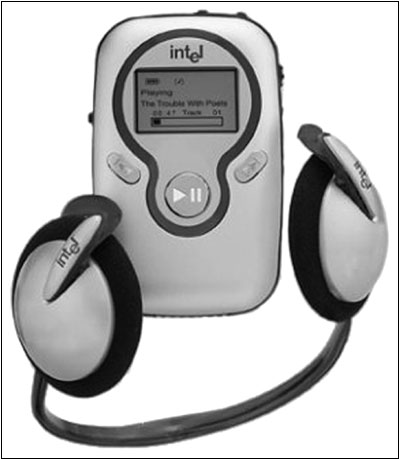
Figure 7. The Intel Pocket Concert was the first mass-produced player with a 128MB capacity.Intel Pocket Concert (2001). The first 128MB portable to be massed produced, the Intel Pocket Concert, shown in Figure 7, was the best player we had ever tested up to that date. It was a top-selling player too, but its success was tempered by changes at Intel. The company would soon eliminate its home electronics division and all of that division's products, including the popular Pocket Concert, were discontinued.
All photos courtesy of the manufacturers.
(Richard Menta, 58 Cedar Ave., #1, Highland Park, NJ 08904)
A member of the New Jersey Antique Radio Club Richard Menta is also the editor of MP3newswire.net. He started the web publication in December of 1998, inspired by the success of the Rio PMP300. He has been collecting radios since 1996, most of them pre-1940 models.
| [Free Sample] [Books, etc., For Sale] [Subscribe to A.R.C./Renew] [Classified Ads] [Auction Prices] [Event Calendar] [Links] [Home] [Issue Archives] [Book Reviews] [Subscription Information] [A.R.C. FAQ] URL = http://www.antiqueradio.com/Apr05_Menta_mp3.html Copyright © 1996-2005 by John V. Terrey - For personal use only. Last revised: February 27, 2005. For Customer Assistance please contact ARC@antiqueradio.com or call (866) 371-0512
Antique Radio Classified |